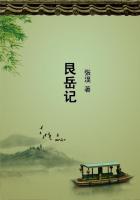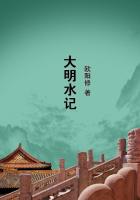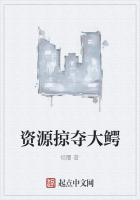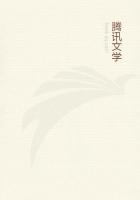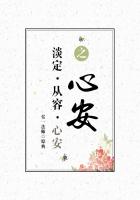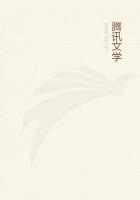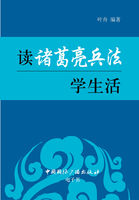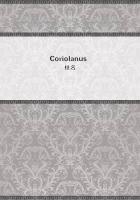FOURTH VOYAGE.
THE INSTRUCTIONS GIVEN FOR THE VOYAGE--HE IS TO GO TO THEMAINLAND OF THE INDIES--A SHORT PASSAGE--OVANDO FORBIDS THEENTRANCE OF COLUMBUS INTO HARBOR--BOBADILLA'S SQUADRON AND ITSFATE--COLUMBUS SAILS WESTWARD--DISCOVERS HONDURAS, AND COASTSALONG ITS SHORES--THE SEARCH FOR GOLD--COLONY ATTEMPTED ANDABANDONED--THE VESSELS BECOME UNSEAWORTHY--REFUGE ATJAMAICA--MUTINY LED BY THE BROTHERS PORRAS--MESSAGES TO SANDOMINGO--THE ECLIPSE--ARRIVAL OF RELIEF--COLUMBUS RETURNS TO SANDOMINGO, AND TO SPAIN.
It seems a pity now that, after his third voyage, Columbus did not remain in Spain and enjoy, as an old man could, the honors which he had earned and the respect which now waited upon him.
Had this been so, the world would have been spared the mortification which attends the thought that the old man to whom it owes so much suffered almost everything in one last effort, failed in that effort, and died with the mortification of failure. But it is to be remembered that Columbus was not a man to cultivate the love of leisure. He had no love of leisure to cultivate. His life had been an active one. He had attempted the solution of a certain problem which he had not solved, and every day of leisure, even every occasion of effort and every word of flattery, must have quickened in him new wishes to take the prize which seemed so near, and to achieve the possibility which had thus far eluded him.
From time to time, therefore, he had addressed new memorials to the sovereigns proposing a new expedition; and at last, by an instruction which is dated on the fourteenth of March, in the year 1502, a fourth voyage was set on foot at the charge of the king and queen,--an instruction not to stop at Hispaniola, but, for the saving of time, to pass by that island. This is a graceful way of intimating to him that he is not to mix himself up with the rights and wrongs of the new settlement.
The letter goes on to say, that the sovereigns have communicated with the King of Portugal, and that they have explained to him that Columbus is pressing his discoveries at the west. and will not interfere with those of the Portuguese in the east. He is instructed to regard the Portuguese explorers as his friends, and to make no quarrel with them. He is instructed to take with him his sons, Fernando and Diego. This is probably at his request.
The prime object of the instruction is still to strike the mainland of the Indies. All the instructions are, "You will make a direct voyage, if the weather does not prevent you, for discovering the islands and the mainland of the Indies in that part which belongs to us." He is to take possession of these islands and of this mainland, and to inform the sovereigns in regard to his discoveries, and the experience of former voyages has taught them that great care must be taken to avoid private speculation in "gold, silver, pearls, precious stones, spices and other things of different quality." For this purpose special instructions are given.
Of this voyage we have Columbus's own official account.
There were four vessels, three of which were rated as caravels.
The fourth was very small. The chief vessel was commanded by Diego Tristan; the second, the Santiago, by Francisco de Porras;the third, the Viscaina (Biscayan), by Bartholomew de Fiesco; and the little Gallician by Pedro de Torreros. None of these vessels, as the reader will see, was ever to return to Spain. From de Porras and his brother, Columbus and the expedition were to receive disastrous blows.
It must be observed that he is once more in his proper position of a discoverer. He has no government or other charge of colonies entrusted to him. His brother Bartholomew and his youngest son Fernando, sail with him.
The little squadron sailed from the bay of Cadiz on the eleventh of May, 1502. They touched at Sicilla,--a little port on the coast of Morocco,--to relieve its people, a Portuguese garrison, who had been besieged by the Moors. But finding them out of danger, Columbus went at once to the Grand Canary island, and had a favorable passage.
From the Grand Canary to the island which he calls "the first island of the Indies," and which he named Martinino, his voyage was only seventeen days long. This island was either the St.
Lucia or the Martinique of today. Hence he passed to Dominica, and thence crossed to San Domingo, to make repairs, as he said.
For, as has been said, he had been especially ordered not to interfere in the affairs of the settlement.
He did not disobey his orders. He says distinctly that he intended to pass along the southern shore of San Domingo, and thence take a departure for the continent. But he says, that his principal vessel sailed very ill--could not carry much canvas, and delayed the rest of the squadron. This weakness must have increased after the voyage across the ocean. For this reason he hoped to exchange it for another ship at San Domingo.
But he did not enter the harbor. He sent a letter to Ovando, now the governor, and asked his permission. He added, to the request he made, a statement that a tempest was at hand which he did not like to meet in the offing. Ovando, however, refused any permission to enter. He was, in fact, just dispatching a fleet to Spain, with Bobadilla, Columbus's old enemy, whom Ovando had replaced in his turn.
Columbus, in an eager wish to be of use, by a returning messenger begged Ovando to delay this fleet till the gale had passed. But the seamen ridiculed him and his gale, and begged Ovando to send the fleet home.
He did so. Bobadilla and his fleet put to sea. In ten days a West India hurricane struck them. The ship on which Columbus's enemies, Bobadilla and Roldan, sailed, was sunk with them and the gold accumulated for years. Of the whole fleet, only one vessel, called the weakest of all, reached Spain. This ship carried four thousand pieces of gold, which were the property of the Admiral.

